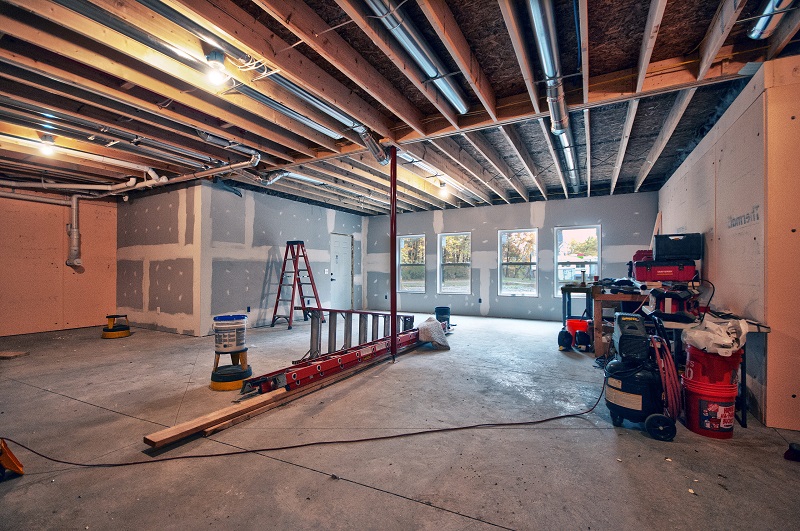When the housing supply is low, as it is in today’s market, modular prefabricated homes provide a convenient alternative to achieving homeownership. Modular homes are built in factory settings (typically built to 70% to 90% of completion), transported to the residential site, and then assembled atop a solid foundation.
Whether you are an experienced investor or a first-time homebuyer, modular homes offer many surprising advantages that are fueling the growing popularity of this home construction method.
Though great advances have been made in the modular construction industry (e.g. cost-efficiencies; quality; energy efficiency; designs; time efficiencies; etc.) over recent decades, the current popularity of prefab ADUs have helped educate a new generation of property owners on the many benefits of prefabricated modular homes.
In this article, we explain what modular homes are and key benefits that this type of construction offers, especially in a market where prospective homebuyers are seeking: affordability; improved energy efficiencies; durable reliability; and contemporary designs and layouts.
Table of Contents
Also see:
The Definition of a Modular Home
Historically, the label of “modular home” has often been mistakenly confused with “manufactured homes” and “mobile homes”, which have had a reputation of lower-quality construction methods and less-appealing design options.
Modular homes, on the other hand, should be viewed as an alternative, more efficient approach of building traditional homes, indiscernible from on-site stick-built homes once completed.
A modular home is a prefabricated home, which means that the vast majority of the home is built within an indoor factory setting with optimized, high-precision, quality-controlled construction processes in place.
Modular homes are similar to traditional homes, as typically two or more modules are connected together on-site and attached to a permanent foundation. Like traditional homes, modular homes can also incorporate basements and crawlspaces.

Image courtesy of Next Modular
Innovators within the prefabricated building industry have been applying best-practice approaches from other manufacturing-centric industries like automotive and consumer products.
There is also confusion around the terms “prefabrication” and “modular”. Modular homes are all prefabricated homes, however, not all prefabricated homes can be classified as modular. In short, modular homes have larger, completed components that can be connected on-site, whereas non-modular prefabricated homes require more on-site construction tasks.

Image courtesy of Next Modular
Regarding prefabricated ADUs, this special type of residential structure could be classified as a “one component” modular home. In many cases, a “one component” ADU can represent one detached, fully-functional studio apartment.
6 Benefits of Modular Homes
- Affordability
- Flexibility
- Improved Air Quality
- Cost-Effective and Time-Saving Construction Methods
- Greater Quality Control
- Sustainable & Eco-Friendly Construction Methods
1. Modular Homes Are Extremely Affordable
Traditional, site-built homes are far more expensive to build, as well as maintain than modular homes. The average price for a modular home ranges between $180,000 and $360,000. While there are variations in pricing depending on the design and local market, this is far lower than what it costs to build an on-site, stick-built home.

Image courtesy of Next Modular
Reduced construction time, and lower labor and material costs are among the main reasons why modular homes are affordable. You can potentially save thousands without sacrificing comfort, aesthetics, or amenities.
One trait of modular home construction that directly lowers the price of a home is “assembly line efficiency” of indoor factories. Processes and tools are incorporated to:
- Increase reliability
- Shorten completion times
- Reduce the need for higher-skilled, more-costly labor
Assembly line efficiencies also reduce material waste, while incorporating lower material costs due to increased buying power with suppliers.
Also see:
2. Modular Homes Offer Flexibility in Design
Modular homes allow you to design your living space per the unique requirements of your family. In short, there are endless design possibilities for modular homes. If you have kids, you can design a modular home that suits the needs of children and adults alike. For example, you could have a separate playroom that could transform into a study when your kids grow up.
3D Tour of Craftsman Cape Cod Modular Home by Next Modular
If you have a multigenerational family, you could design a one-level modular home without stairs, which can make entering and moving around easier for elderly and physically-challenged members of the family. Modular plans can easily be made wheelchair accessible. A modular home can be configured in such a way that there could be extra bathrooms, or rooms for live-in caretakers.
One of the most typical reworked areas of any house is the kitchen. With a modular home, you can design an expanded kitchen, wet bar, and more.

Moreover, if you live in a neighborhood with lush surroundings, you can customize your modular home to bring you closer to the outdoors by designing larger patio doors opening into the garden, or windows overlooking it. This is particularly useful for families with children. Porches can add value to homes, at very little cost, particularly in warmer months.
You can design your studio to indulge in hobbies, or you could add storage or a rental unit to your modular home. Essentially, you are free to customize your home in whichever way you want. This gives you far more flexibility to build a house suited to your specific needs.
Also see:
3. Modular Homes Offer Improved Air Quality
Indoor air quality is among the top determinants of one’s health. Green modular homes offer better and improved indoor air quality through the use of non-toxic materials and paints. This reduces the circulation of harmful chemicals in the air.
Most modular homes also incorporate state-of-the-art ventilation systems, which remove allergens, moisture, and pollutants from the air inside your home. In this way, a modular home can also look after the health and well-being of your family.

Image courtesy of Next Modular
4. Modular Homes Offer Cost-Effective and Time-Saving Construction Methods
Though there are many factors that will impact the amount of time and budget necessary to build a new home no matter the construction method, modular homes when compared to traditional stick-built homes inherently take shorter time to complete and cost less.

Again with “indoor assembly-line efficiencies” in mind, the modular home building process has several time and cost efficiencies built into the process, such as:
- The foundation and the home can be built simultaneously
- Popular pre-designed floor plans are faster to implement and reduce the risk of time-delays due to adjusting customized features
- Indoor factory construction capabilities are highly efficient, reliable, fast, and virtually impervious to weather delays
- Cost-savings from highly efficient purchasing and usage of building materials can be passed down to homebuyers
- The final on-site installation and connections of modules only takes days and not weeks or months

Image courtesy of Next Modular
Since modular homes are constructed within a controlled environment, circumstances (e.g. weather delays; suboptimal climate conditions for temperature- and moisture-sensitive construction processes) that can affect traditional outdoor home construction do not factor in. Since modular construction mostly takes place indoors, weather conditions rarely, if ever, hamper or delay the process.
As long as you have the necessary prerequisites in place (e.g. requisite permits; foundation; appliance purchases; utility hookups; etc.), a modular home can be move-in ready within three to four months. In comparison, traditional outdoor stick-built homes will often require more than six months, at the very least.
5. Modular Homes Offer Greater Quality Control
All modular homes are built to a standard. This is critical as there can be little margin for error when the house is being built on an assembly line and later connected on-site.

Image courtesy of Next Modular
At the factory, builders have access to precision tools, which are not available to traditional construction workers. Prefab building factories also have to pass strict quality control regulations which means a modular home is less likely to need repairs after moving in than a stick-built home.
The result of external forces can sometimes deteriorate the quality of traditionally built homes, including human error. However, the quality of a modular home is extensively supervised and measured in a factory setting. Therefore, even though the construction process is short, it is precise in its execution.
Moreover, modular homes are built according to strict code requirements leaving no margin of error for installation problems. By the time a modular home is ready to be installed, it passes several inspections and assessments.
6. Modular Homes Incorporate Sustainable & Eco-Friendly Construction Methods
Sustainability and environmental consciousness have become a priority for many homeowners, especially in terms of long-term energy consumption and resource costs. Modular homes have a far lower environmental impact than traditional on-site built homes, producing up to 90% less waste. The energy-efficient nature of modular construction, volume purchasing of materials, and recycling of waste materials are among the top reasons for this.
Owners of modular homes will benefit from lower utility costs due to higher energy efficiency, a result of features such as:
- Solar Panels
- High-Quality Insulation
- Energy-Efficient Windows
- Geothermal Heating and Cooling Systems
- Energy-Efficient Siding
- Energy Star Appliances
The high-precision manufacturing methods and extensive quality control mechanisms enable modular homes to have “tight envelopes”, which is critical for mitigating air leakage. Conversely, when homes “leak air” (warm air enters during hot months, while warm air escapes during cold months), the air systems have to work harder to maintain desired temperatures, thus consuming more energy.
In a dynamic world where great strides are being made in the field of sustainability and energy-efficiency, a modular home is a step in the right direction. Moreover, modular homes also require less maintenance. This reduced responsibility to maintain and upgrade a home constantly can be a welcome solace for many homeowners.
Modular Home Trends to Watch
Whether you are considering building a prefabricated modular home or not, the modular home construction industry is worth tracking in order to stay abreast of home innovation trends.
As we mentioned earlier, young vendors in the prefab ADU space have followed the lead of established modular home builders, to bring innovative manufacturing capabilities to address housing shortages quickly, especially in markets such as California.
Aggressive investment and progress within the “prefab” and “modular” ADU and home building spaces, have been making a powerful and positive impact on public perception. Again, the modular home construction industry was once mistaken for something it was not (e.g. low-quality mobile and manufactured homes) for too long.
Now, rightly, the prefab modular construction space has become synonymous with forward-looking innovation that is rapidly anticipating future needs of an ever-demanding consumer base.
The prefab modular construction space has become synonymous with forward-looking innovation
The label “modular” will certainly help convey attractive benefits to younger, tech-savvy homebuyers, as they have become accustomed to tech-driven ways to personalize their products and experiences conveniently.
Similar to plug-and-play computer products, modular home builders are emulating tech-driven flexible solutions that are not only making home building easier and more affordable, but also making homes more convenient and cost-effective to maintain, adapt and enjoy!
Also see:
More Recommended Construction Articles
- What to Consider Before Purchasing a Solar Panel System for Your Home
- The Future of Construction According to Paolo Tiramani, CEO of Boxabl
- How Technology is Influencing What Consumers Want from Homeownership
- Home Inspection Technologies to Alleviate Your Purchase Anxiety
- Want a Tough House that Looks Great? Try Engineered Wood Siding!
- What is a Turnkey Home in Today’s Market?
- Homebuyer Beware: The Perils of Flipped Homes
- Why Digital Twins are the Future of Homeownership
| Purgula is reader-supported. When you click on links to other sites from our website, we may earn affiliate commissions, at no cost to you. If you find our content to be helpful, this is an easy way for you to support our mission. Thanks! Learn more. |







